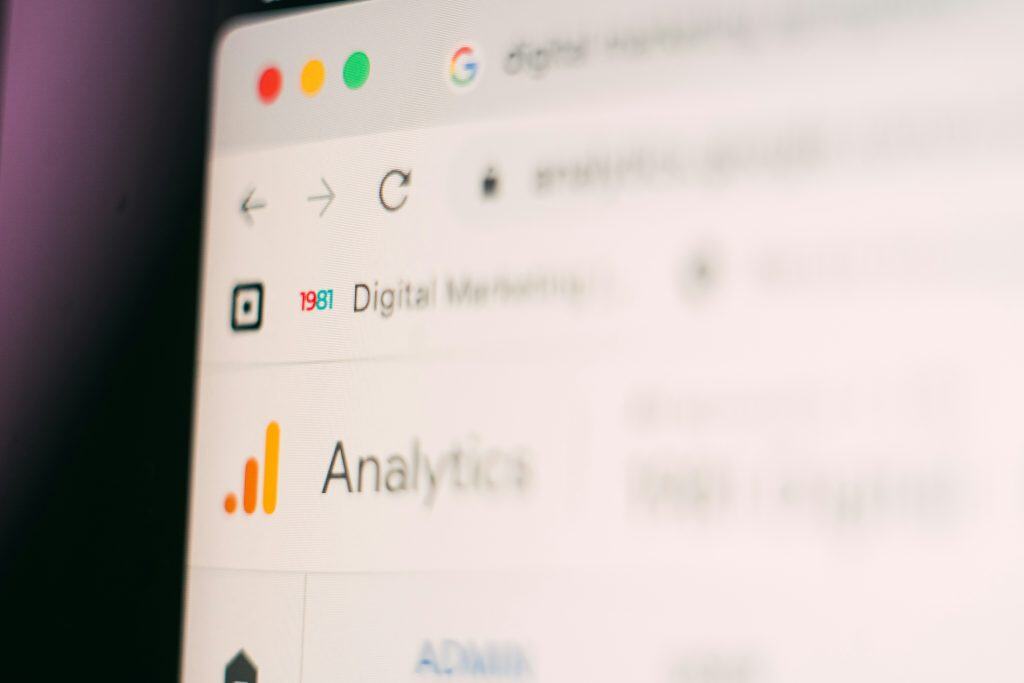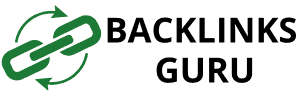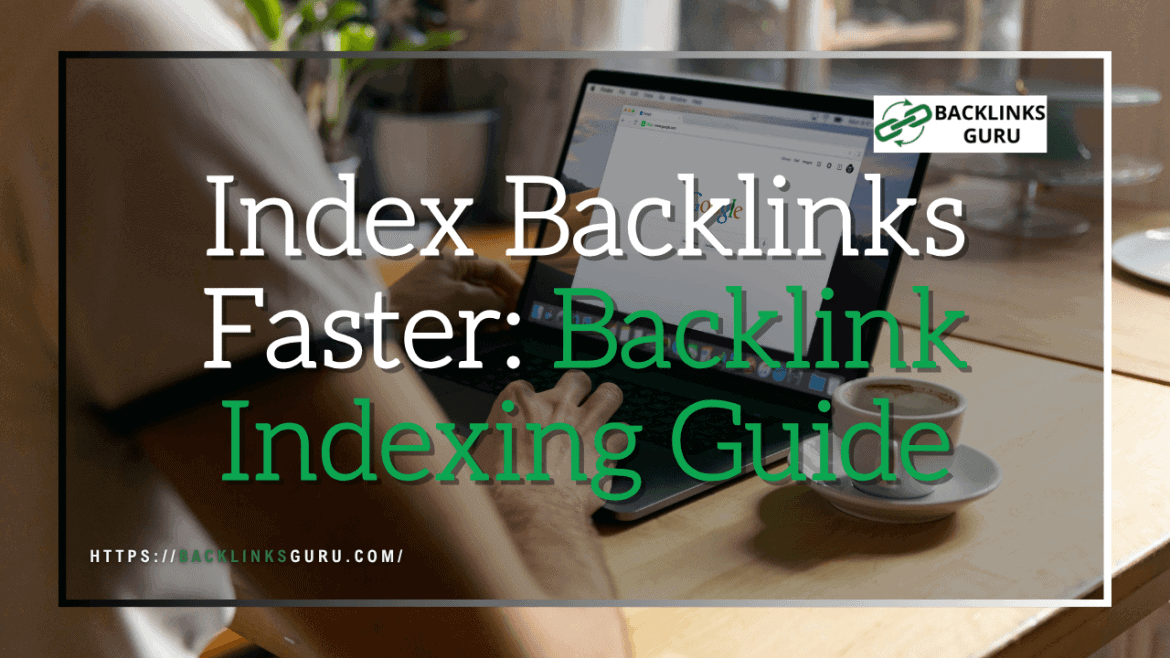🚀 Boost Your Rankings — Learn Proven Strategies To Index Backlinks Faster For Maximum SEO Impact!
In the ever-evolving landscape of SEO, securing backlinks remains a cornerstone of effective online marketing. However, simply building backlinks isn’t enough. Ensuring that these backlinks are indexed by search engines like Google is crucial for them to positively impact your website’s ranking. This guide delves into the world of backlink indexing, offering practical strategies and tools to index backlinks faster and maximize their SEO value, especially as we move closer to 2026. Understanding how to get your backlinks indexed and index your backlinks faster can significantly improve your SEO strategy.

Understanding Backlinks
What are Backlinks?
Backlinks, also known as inbound links, are links from one website to another. They act as a vote of confidence from one site to another, signaling to search engines that the linked-to content is valuable and trustworthy. When an authority site links to your website, it passes on some of its “link juice”, boosting your site’s authority and potentially improving your search engine ranking. The more high-quality backlinks you have pointing to your site, the more likely it is that search engine algorithms will consider your content relevant and credible. Therefore, acquiring backlinks is an essential part of link building.
The Importance of Quality Backlinks
While the quantity of backlinks matters, the quality of those backlinks is even more critical. High-quality backlinks from reputable and relevant websites carry more weight than numerous backlinks from low-quality or spammy sites. Search engines prioritize backlinks from authority sites because these sites have earned their reputation through consistently providing valuable content and maintaining a strong online presence. Building links from relevant websites is also key, as these links demonstrate topical relevance to search engines. Focusing on acquiring high-quality backlinks is essential for sustainable SEO success. In short, getting your backlinks indexed is important, but having great backlinks is even more important.
How Backlinks Impact Ranking
Backlinks are a significant ranking factor for search engines like Google. When search engine algorithms crawl and index the web, they analyze the backlink profile of a website to determine its authority and relevance. A strong backlink profile, consisting of high-quality backlinks from diverse and relevant sources, can significantly improve a website’s position in search engine results pages (SERPs). Conversely, a weak or spammy backlink profile can negatively impact ranking and may even lead to penalties. Therefore, managing your backlinks effectively and ensuring that they are indexed is crucial for maintaining and improving your website’s SEO performance. If backlinks aren’t indexed, they do not contribute to ranking.
Backlink Indexing Explained
What is Backlink Indexing?
Backlink indexing is the process by which search engines, like Google, discover, crawl, and index the backlinks pointing to a website. Simply put, it’s about ensuring that the search engine recognizes the existence of these backlinks so that they can contribute to the website’s ranking. If backlinks aren’t indexed by Google, they won’t pass any link juice or improve the SEO of the target page. Backlink indexing is crucial because only backlinks that are indexed count towards a website’s authority and ranking. Without proper indexing, the effort spent to build links is wasted.
How Google Indexes Backlinks
Google’s ability to discover and index backlinks plays a critical role in how a website’s SEO strength is evaluated. When another website links to yours, Googlebot — Google’s web crawler — follows that link during its crawling process. If the linking page is already in Google’s index and is crawled regularly, there’s a strong chance your backlink will be discovered and indexed quickly.
1. Crawling and Discovery
Google starts by crawling the linking page. If the backlink is placed in a contextually visible and crawlable area — such as within the main body content — Googlebot is more likely to detect and follow it. However, if the link is hidden in JavaScript, placed in a nofollow section, or buried deep in footer/sidebar widgets, it may be ignored or take longer to get noticed.
2. Evaluating Link Context and Relevance
Once discovered, Google evaluates the context of the backlink. Factors like surrounding content, anchor text, page quality, and relevance to your niche influence how much SEO value the link passes. Links embedded naturally within valuable content are more likely to be indexed and rewarded than spammy or forced placements.
3. Indexing the Target Page
After following the backlink, Googlebot assesses the linked (target) page. If the page hasn’t been indexed yet, and the backlink is coming from a reputable source, it may trigger Google to crawl and index it sooner. However, indexing isn’t guaranteed — the content must meet quality standards, be accessible (not blocked by robots.txt), and offer value to users.
4. Link Signals in Google’s Ranking Algorithm
Indexed backlinks become part of Google’s massive link graph — a system that helps evaluate domain authority, topical relevance, and trustworthiness. The more quality backlinks that point to a site, the more “votes of confidence” it receives, helping it climb in search rankings.
5. Delays and Variability in Indexing
Not all backlinks are indexed immediately. Factors such as the crawl frequency of the linking site, the page authority, the freshness of content, and Google’s resource prioritization can influence how fast a backlink is discovered and added to the index. Regular monitoring and content updates can help ensure backlinks are recognized and retained.

Factors Affecting Backlink Indexing
Backlink indexing isn’t automatic — even when a link is placed on a live website, it doesn’t mean Google will immediately crawl and index it. Several factors influence whether and how quickly a backlink is discovered and added to Google’s index. Understanding these factors can help you improve the chances of your backlinks being recognized and passing SEO value.
1. Authority of the Linking Page
Google is more likely to crawl and index links found on high-authority websites. Pages with strong domain authority, trustworthiness, and a regular crawl history tend to have their outbound links indexed faster. A backlink from a well-maintained blog or news site carries more indexing power than one from a low-quality or newly built page.
2. Crawl Frequency
Websites that are crawled often by Google (due to regular content updates or high authority) help backlinks get noticed more quickly. If your backlink is placed on a site that Google crawls daily, it’s likely to be discovered sooner than a backlink placed on a dormant or rarely updated site.
3. Link Placement
The location of a backlink within a page matters. Links placed within the main body content — especially in the first half of the page — are more likely to be indexed than links buried in footers, sidebars, or hidden behind tabs. Google prioritizes content that appears prominent and useful to readers.
4. Follow vs. Nofollow Attributes
While Google may choose to index nofollow backlinks, dofollow links are more likely to be crawled and indexed because they signal endorsement. Nofollow attributes instruct crawlers not to pass authority, which can affect both indexing and SEO impact.
5. Page Freshness and Activity
If the linking page is fresh, recently published, and gets traffic or engagement (such as comments or shares), Google is more likely to prioritize it during crawling. Older pages that aren’t updated or linked to internally may take longer to trigger backlink discovery.
6. Relevance and Content Quality
Google considers content relevance and quality signals when determining how to treat backlinks. If the linking page is topically aligned with the linked content and provides value, it increases the chance that both the backlink and the target page will be indexed.
7. Internal Linking on the Linking Site
If the page with your backlink is linked internally from the site’s homepage or other important pages, it’s more likely to be crawled. Orphaned pages (pages with no internal links pointing to them) may not get crawled often, delaying backlink indexing.
8. Use of Robots.txt and Meta Tags
If the linking page uses robots.txt or noindex meta tags to block crawlers, the backlink may never be seen or followed. Always ensure backlinks are placed on crawlable and indexable pages for maximum SEO benefit.
9. Spam Signals or Link Schemes
Backlinks that are part of obvious link schemes or placed on spammy websites may be ignored or even penalized. Google’s algorithms and manual reviewers may flag manipulative linking patterns, which can prevent indexing altogether.

Strategies to Index Backlinks Faster
Best Tools for Backlink Indexing
Several SEO tools can assist in speeding up the backlink indexing process. Semrush, for example, offers features to check backlinks and monitor their indexing status. A backlink indexer can also automate the process of submitting URLs to search engines for indexing. Using a ping service to notify search engines of new backlinks can prompt a faster crawl. Manually submitting URLs to Google Search Console remains a reliable method to ensure indexing. Choosing the best tools depends on your budget and the scale of your link building efforts, but leveraging these resources can significantly reduce the time it takes for your backlinks to get indexed, thereby improving your overall SEO strategy and ensuring your backlinks are indexed in a timely manner.
Techniques to Build Backlinks
Effective link building techniques are crucial for acquiring quality backlinks that get indexed faster. Focus on creating valuable and engaging content that naturally attracts backlinks. Participate in relevant online communities and forums to build links and establish yourself as an authority. Broken link building, where you identify broken URLs on other websites and offer your content as a replacement, is a high-quality way to build backlinks. Utilizing Web 2.0 platforms can create backlinks but it is important to do this correctly. Employing these techniques will improve the likelihood of your backlinks getting indexed faster and contributing positively to your ranking in 2025. If you want your backlinks indexed faster, then using the correct approach when you build backlinks is important.
Using Guest Posts for Faster Indexing
Submitting guest posts on relevant authorities can be an effective way to acquire quality backlinks that get indexed faster. When you publish a guest post, include a backlink to your website within the content. Since authority sites are crawled more frequently by search engines, your backlink is more likely to get indexed faster. Ensure that your guest post is well-written, informative, and relevant to the target audience. This will not only increase the likelihood of your guest post being published but also enhance the quality and its impact on your SEO. By leveraging guest posts, you can improve your backlink indexing efforts and boost your ranking in 2025. Therefore, getting your backlinks indexed can be improved with guest posts.
Monitoring Backlink Performance
How to Check Indexed Backlinks
After building backlinks, the next crucial step is ensuring they are indexed by Google. If a backlink isn’t indexed, it won’t pass SEO value or help improve rankings. Fortunately, there are several simple methods to check whether your backlinks are indexed.
1. Use Google Search Operators
The easiest method is to manually check using Google’s site: operator. Copy your backlink URL and search it on Google like this:
If the page appears in search results, it’s indexed. If not, it’s likely still pending or hasn’t been indexed yet.
2. Use Google Search Console
If the backlink is pointing to your site and you own the domain, you can log into Google Search Console and use the URL Inspection Tool:
- Enter the backlinking page URL.
- If it’s indexed, you’ll see a message confirming that.
- If not, you can request indexing manually.
This only works if you have access to the linking domain or have verified ownership.
3. Use Backlink Analysis Tools
Several SEO tools offer backlink indexing status tracking. Popular options include:
- Ahrefs: Shows which backlinks are live and indexed.
- SEMrush: Displays indexed backlinks under the “Backlink Audit” tool.
- Majestic: Indicates crawl dates and index status.
- Linkbox.pro: Specifically designed to track and index backlinks you’ve built.
These tools can track dozens or hundreds of backlinks at once, saving time compared to manual checking.
4. Check with Indexing Tools
If you’ve submitted backlinks via indexing tools like IndexJump, Linkbox, or IndexPush, most offer dashboards to check if links have been crawled and indexed. This is helpful if you’re managing links across multiple campaigns.
Final Tip
Backlinks can take time to be indexed. If you’ve waited a few weeks and they’re still not appearing in search, consider resubmitting them through indexing services or ensuring the source pages themselves are crawlable and have some internal or external links pointing to them.
Analyzing Backlink Quality
Analyzing backlink quality is as crucial as ensuring they get indexed. Assess the authority of the linking domains, as backlinks from reputable sites carry more weight. Check the relevance of the content on the linking page to ensure it aligns with your website’s niche, which can improve your ranking. Examine the anchor text used in the backlink; natural and varied anchor text is preferable to keyword-stuffed text. Monitor the overall backlink profile for any signs of toxic or spammy backlinks, as these can negatively impact your SEO performance. Regularly reviewing these factors will help you maintain a strong and effective backlink profile, ensuring that the backlinks are indexed and contribute positively to your ranking.
Adjusting Strategies for Better Results
Based on your backlink performance analysis, adjust your strategies to achieve better results. If you find that certain backlinks aren’t indexed by Google, consider resubmitting the URLs to Google Search Console or using a backlink indexer to expedite the indexing process. Refine your link building techniques to focus on acquiring backlinks from authorities. Diversify your backlink sources to create a more natural and robust backlink profile. Continuously monitor your progress and make data-driven adjustments to your SEO strategy to maximize the impact of your backlinks and improve your ranking in 2025. Regularly monitor the indexing process and keep striving to find the best tools to get backlinks indexed.

Future of Backlink Indexing
Trends in Backlinking
The future of link building is evolving, with increased emphasis on relevance, context, and user experience. Search engine algorithms are becoming more sophisticated at evaluating the quality and naturalness of backlinks. Expect a shift towards relationship-based link building, where genuine connections with other websites and influencers drive backlink acquisition. Artificial intelligence and machine learning will play a more significant role in analyzing backlink profiles and identifying spammy or manipulative tactics. As we move towards 2025, focus on building authentic and valuable backlinks that provide real value to users to ensure your SEO strategy remains effective. Using Reddit may also become a part of the strategy in the upcoming years. Make sure that you index your backlinks faster to outcompete your competitors.
Preparing for Changes in Google Indexing
To prepare for changes in Google indexing, stay informed about the latest algorithm updates and guidelines. Index backlinks fast by optimizing your website’s crawlability and ensuring that your content is easily discoverable by search engine bots. Regularly monitor your backlink profile for any signs of unnatural or low-quality backlinks and disavow them promptly. Focus on creating content that naturally attracts backlinks from authorities. Diversify your link building strategies to reduce reliance on any single tactic. By staying proactive and adaptable, you can navigate the evolving landscape of search engine indexing and maintain a competitive ranking in 2025. It is important to get backlinks indexed faster in order to succeed.
Innovative Techniques for Quality Backlinks
Explore innovative techniques to acquire backlinks and index backlinks faster. Content collaborations, where you partner with other websites or influencers to create joint content, can result in backlinks and broader reach. Data-driven link building, where you use data and research to create compelling content that attracts backlinks, can be highly effective. Interactive content, such as quizzes, calculators, and infographics, is also a great way to build backlinks and increase user engagement. Focus on providing unique and valuable content that stands out from the crowd and naturally attracts backlinks from relevant authorities. Using guest posts and Web 2.0 blogs could also yield backlinks and improve your website’s overall SEO strategy for 2025.
Best Backlink Indexing Tools
Backlinks are a cornerstone of SEO success—but they only work if Google and other search engines actually index them. Simply building a backlink isn’t enough. If the link isn’t discovered and crawled, it won’t pass authority or improve your rankings. This is where backlink indexing tools come in handy. These tools are designed to submit your backlink URLs directly to search engine crawlers for faster and more reliable indexing.
Top Backlink Indexing Tools for Submitting URLs
Here are some of the best tools designed specifically for submitting backlink URLs to search engines:
1. Backlink Indexer
Website: linkbox.pro
Backlink Indexer is a powerful tool designed for serious SEO professionals. It allows users to add a large list of backlink URLs and submits them using multiple methods to search engine bots, increasing the chances of fast indexing.
Key Features:
- Bulk URL submission
- Google and Bing indexing support
- Track which backlinks get indexed
- Includes link monitoring tools
2. IndexJump
Website: indexjump.com
IndexJump is built to help SEOs and link builders submit URLs in bulk to search engine crawlers. It supports real-time crawl status, submission logs, and bulk upload features, making it ideal for agencies and pros managing many backlinks.
Key Features:
- Real-time crawl tracking
- Clean user interface
- Supports hundreds of URLs at once
- Affordable indexing plans
3. IndexPush (Free Option)
Website: scapbot.com
IndexPush offers a simple, free solution for submitting URLs directly to indexing APIs. While it may not offer advanced features, it’s great for new marketers or those needing a budget-friendly option.
Key Features:
- Free URL submission
- Google and Bing indexing
- API-based indexing support
- Quick and easy setup
What to Look for in an Indexing Tool
When selecting an indexing tool for your backlink strategy, keep the following in mind:
- Bulk Submission: Does the tool support uploading multiple URLs at once?
- Success Rate: Does the tool actually get your links indexed—or just ping them?
- Transparency: Are you provided with detailed reports on which URLs are indexed?
- API Integration: Does it use safe, Google-approved indexing APIs or risky methods?
- Speed: How quickly do submitted URLs show up in search engine indexes?
Final Thoughts
Backlink indexing tools are essential for ensuring your SEO efforts don’t go unnoticed. While backlinks naturally get discovered over time, using a reliable indexing tool helps you speed up that process—especially for lower authority or slow-crawling domains.
If you’re investing in high-quality backlinks, make sure they count. Try out these tools to submit your URLs for indexing and track their performance. Combine good content, clean backlinks, and proactive indexing—and you’ll set your SEO strategy up for success.

Frequently Asked Questions
What are backlinks and why are they important for indexing?
Backlinks are links from one website to another and play a crucial role in SEO. They are important for indexing because search engines like Google consider them as votes of confidence. The more high-quality backlinks a webpage has, the more likely it is to rank higher in search results, which ultimately helps in getting your backlinks indexed faster.
How can I get my backlinks indexed faster?
To get your backlinks indexed faster, you can use several strategies such as submitting your URLs to Google through the URL inspection tool, sharing your content on social media, and ensuring that the backlinks come from high authority sites. These methods can help increase the indexing speed of your backlinks.
Why are my backlinks not indexed?
There are several reasons why your backlinks may not be indexed. They could come from low-quality or spammy sites, or Google might not have crawled them yet. Additionally, if the linking page is not accessible, the backlinks will not be indexed. Understanding backlink quality and ensuring they come from reputable sources can help improve indexing.
What is the relationship between backlinks and Google indexing?
The relationship between backlinks and Google indexing is significant. Google uses backlinks to discover new pages and to assess the quality of content. When a backlink is created, it signals to Google to crawl the linked page. Thus, high-quality backlinks can enhance the chances of getting indexed, while poor-quality links may hinder the process.
How long does it take for Google to index my backlinks?
The time it takes for Google to index your backlinks can vary. It could take anywhere from a few days to several weeks. Factors that influence this duration include the authority of the linking site, the frequency at which Google crawls that site, and the overall quality of the backlinks. Utilizing the Google webmaster tool can provide insights into indexing status.
What are the best ways to build links for faster indexing?
Building links through guest posts on high authority sites is one of the best ways to acquire backlinks that are indexed quickly. Other methods include participating in relevant forums, creating shareable content, and leveraging social media platforms to drive traffic to your backlinks, speeding up their indexing.
Can I manually get backlinks indexed?
Yes, you can manually get backlinks indexed by submitting the exact URL of your backlink to Google via the URL inspection tool. This tool allows you to request indexing, which can facilitate faster inclusion into the search index. However, ensure that the linking page is of high quality to avoid getting penalized.
What should I do if my existing backlinks are not indexed?
If your existing backlinks are not indexed, consider checking the quality of the linking pages and ensuring they are accessible to Google’s crawlers. You might also want to resubmit them through the Google webmaster tool or create additional high-quality content that can attract more backlinks, increasing the chances of indexing.
How can guest posting help in backlink indexing?
Guest posting is an effective way to create backlinks from high authority sites, which can significantly enhance the likelihood of getting indexed. When you publish quality content on reputable platforms, it not only builds links but also increases the chances for Google to crawl and index those backlinks efficiently.
What is backlink indexing speed and how can I improve it?
Backlink indexing speed refers to the rate at which search engines like Google index backlinks. To improve it, ensure your backlinks come from high-quality sites, use the URL inspection tool to submit links, and promote your content on social media. These actions can enhance the probability of getting backlinks indexed quickly.


